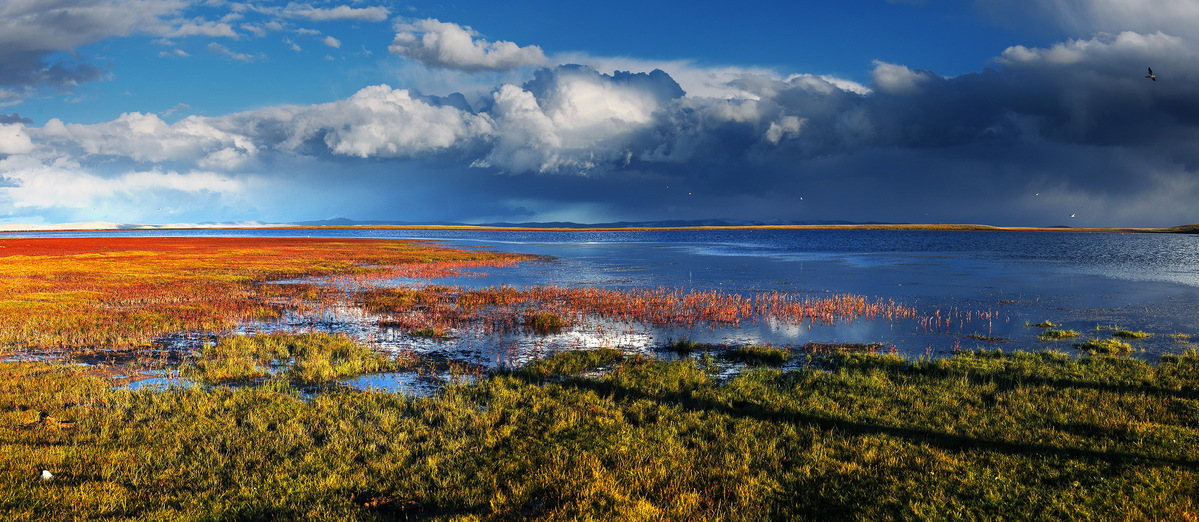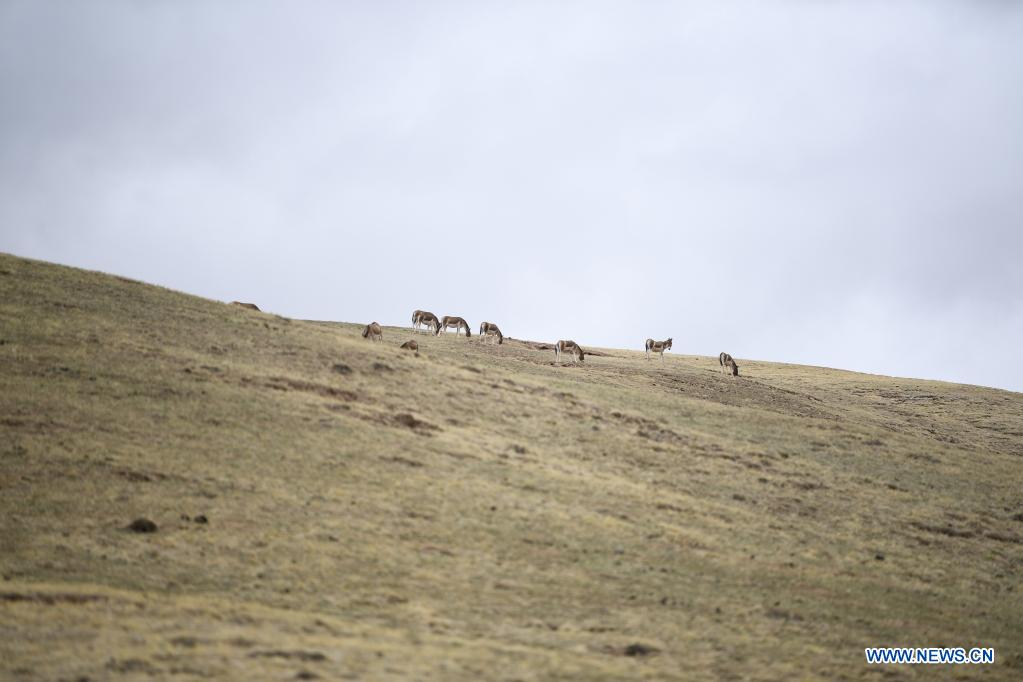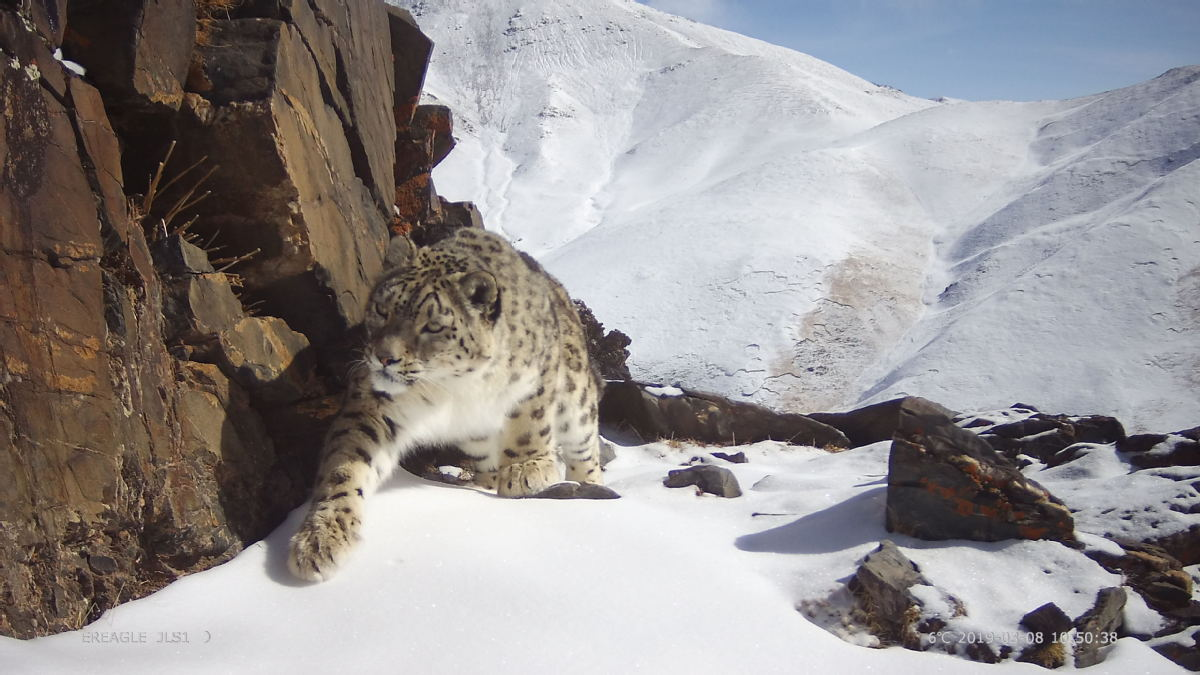
A pristine wetland in the Sanjiangyuan, or Three-River-Source, National Park in Qinghai province. PROVIDED TO CHINA DAILY
Improvements to the local ecosystem are attracting visitors and raising people's living standards
During this year's May Day holiday, the northwestern province of Qinghai experienced a tourism boom, despite the hangover from the COVID-19 outbreak.
The province recorded more than 2.46 million visits during the break, a rise of 101 percent from the same period last year, generating income of more than 1 billion yuan ($156 million), according to the Qinghai Provincial Culture and Tourism Bureau.
Eco-friendly tourism activities, such as wild exploration routes and animal-watching tours, were the most popular options.
In recent years, Qinghai has made great efforts in environmental protection. It has built many nature reserves, forest parks, wetland parks and geoparks, which have boosted the eco-friendly tourist services provided by the province.
Qinghai has more than 100 different travel routes related to themes such as healthcare, culture, natural scenery, wildlife tours and even biological study.
Visitors can also experience a range of local cuisine based on vegetables and meat dishes at family farms.
Statistics from the provincial tourism bureau show that Qinghai launched 2,860 cultural and tourist projects between 2016 and last year, involving total investment of more than 103 billion yuan.
The province is home to three national ecotourism demonstration zones, 113 cultural industry demonstration areas and more than 200 handicraft workshops.
"The sources of China's three most important rivers-the Yangtze, Yellow and Lancang-are all located in Qinghai, and this has earned the province the nickname 'China's water tower'," Xin Changxing, the provincial governor, said at the opening ceremony of the 2021 Qinghai Culture and Tourism Festival on May 19.
In addition to the natural scenery and landscapes, Xin said Qinghai is a great place with a diverse history and culture.
"We will use our advantages and promote eco-friendly, culture-related tourism to build Qinghai into a well-known travel destination both at home and abroad," he said.

A herd of Tibetan donkeys are seen at the source of the Yellow River section of the Sanjiangyuan (Three-River-Source) National Park in Golog Tibetan autonomous prefecture of Northwest China's Qinghai province, May 25, 2021. [Photo/Xinhua]
Park development
The establishment of the Sanjiangyuan, or Three-River-Source, National Park, the first of 10 such facilities initiated in 2016, has played a crucial role in the path of green development.
As a key element in the country's comprehensive strategy to improve the environment and protect natural resources, construction of the national parks system is expected to make a significant contribution to the protection of the ecosystem and wildlife.
In 2015, China officially started the pilot parks project, covering a combined 215,000 square kilometers, about 2.2 percent of the country's total land area.
The Three-River-Source National Park was the first and largest of the pilots, covering more than 123,000 sq km.
That's about 14 times the area of Yellowstone National Park in the United States and 19 times larger than the Banff National Park in Canada.
According to a report released by the park's management committee, by 2019 grassland vegetation cover had increased by 27 percent from 2017.
In the past three years, the water quality of the Yangtze River in Yushu Tibetan autonomous prefecture has remained good enough for it to qualify as drinking water, said He Baoyuan, deputy director of the park's management office.
He added that the range of vegetation in the park has been increasing, thus aiding the improvement of the ecological environment, a sustainable development concept promoted by the Communist Party of China. To encourage more people to help with environmental protection, the local government has supported efforts to provide conservation training for one person from each of the families relocated when the park was established.
Statistics from the office show that 17,211 rangers are working in the park, bringing each family annual income of about 21,600 yuan.
In 2019, Qinghai started investigation and evaluation work at its nature reserves, helping to gain more detailed information about all natural resources in the province to ensure better protection.
As a result, the province has remapped its nature reserves. As of May 19, it had 79 nature reserves, covering a combined 267,700 sq km and accounting for 38.43 percent of Qinghai's total land area.
Of those reserves, national parks, including Sanjiangyuan and the Qilian Mountains National Park (which straddles Qinghai and Gansu province), accounted for half of the province's total area of nature reserves.
Protection efforts have borne fruit, with some endangered animals resurfacing in recent years.
"People's awareness of the importance of environmental protection is much higher than in the 1980s," said Sonam Rinchen, who works for the forest public security department in Zhidao, a county in the Three-River-Source National Park.
Every day, the 41-year-old conducts patrols in Zhidao to crack down on the illegal hunting of wild animals, the illegal collection of protected wild plants and other illicit activities that threaten the environment.
"Cases of illegal hunting have hardly occurred in recent years, and large animals can be seen more frequently," Sonam Rinchen said. "For example, snow leopards could hardly be found a decade ago. But now, they can be seen from time to time, especially in Zhidao's Soga town, one of their major habitats."

Infrared photo taken on March 8, 2019 shows a snow leopard in Sanjiangyuan (Three-River-Source) National Park in the Yushu Tibetan autonomous prefecture of Northwest China's Qinghai province. [Photo/Xinhua]
Big cats and cubs
During this year's meeting of the National People's Congress, the nation's top legislative body, Kong Qingju, an NPC deputy from Qinghai, showed President Xi Jinping photos of snow leopards and Chinese mountain cats. The pictures sparked a surge in awareness and interest.
One of the photos was taken in July last year during a survey conducted by the management office and researchers from Peking University. It showed a Chinese mountain cat and her four cubs playing on a mountain slope.
The other photo, which showed a five-strong snow leopard family, was taken in the park's Qinghai section in May 2018.
Kong said Qinghai's wildlife had been seriously threatened by overgrazing, excessive tourism, illegal mining and the general degradation of vegetation dating back to the 1980s.
Those factors had all contributed to a sharp decline in the number of wild animals seen in the province.
"Thanks to the environmental protection efforts by both the government and local people, the Qilian Mountains are protected by the strictest rules, and they are now seeing expanded green areas, fewer sandstorms and cleaner water," Kong said.
Since the park was established, the mountain environment has been recovering steadily, with the numbers of some endangered species rebounding.
In recent years, infrared cameras have captured images of several animals not seen since the 1990s.
They include snow leopards and Chinese mountain cats, both listed as "vulnerable" by the International Union for Conservation of Nature.
Environmental protection has been prioritized, and the province aims to build two more national parks-the Qinghai Lake National Park and the Kunlun Mountains National Park.
To better promote the idea of environmental protection, many schools are encouraging eco-themed lectures to encourage the younger generation to play a leading role.
In 2012, Bagan Boarding Primary School in Qumarleb county-part of the Three-River-Source National Park-started eco-themed lectures, and students are encouraged to record the changing status of wild animals and plants through paintings and diary entries.
The school has also built a bird-observation station to allow closer examination of various species.
Kalzang Tashi, a teacher, said a summer drama festival has been launched, and the students are invited to present plays related to environmental protection.
"Many students are able to recognize tens of wild animals and plants in the town," he said.
"In addition, they have influenced their family members by the knowledge they've gained at school, and they have also contributed greatly to raising awareness of environmental protection."
Li Hongyang contributed to this story.


